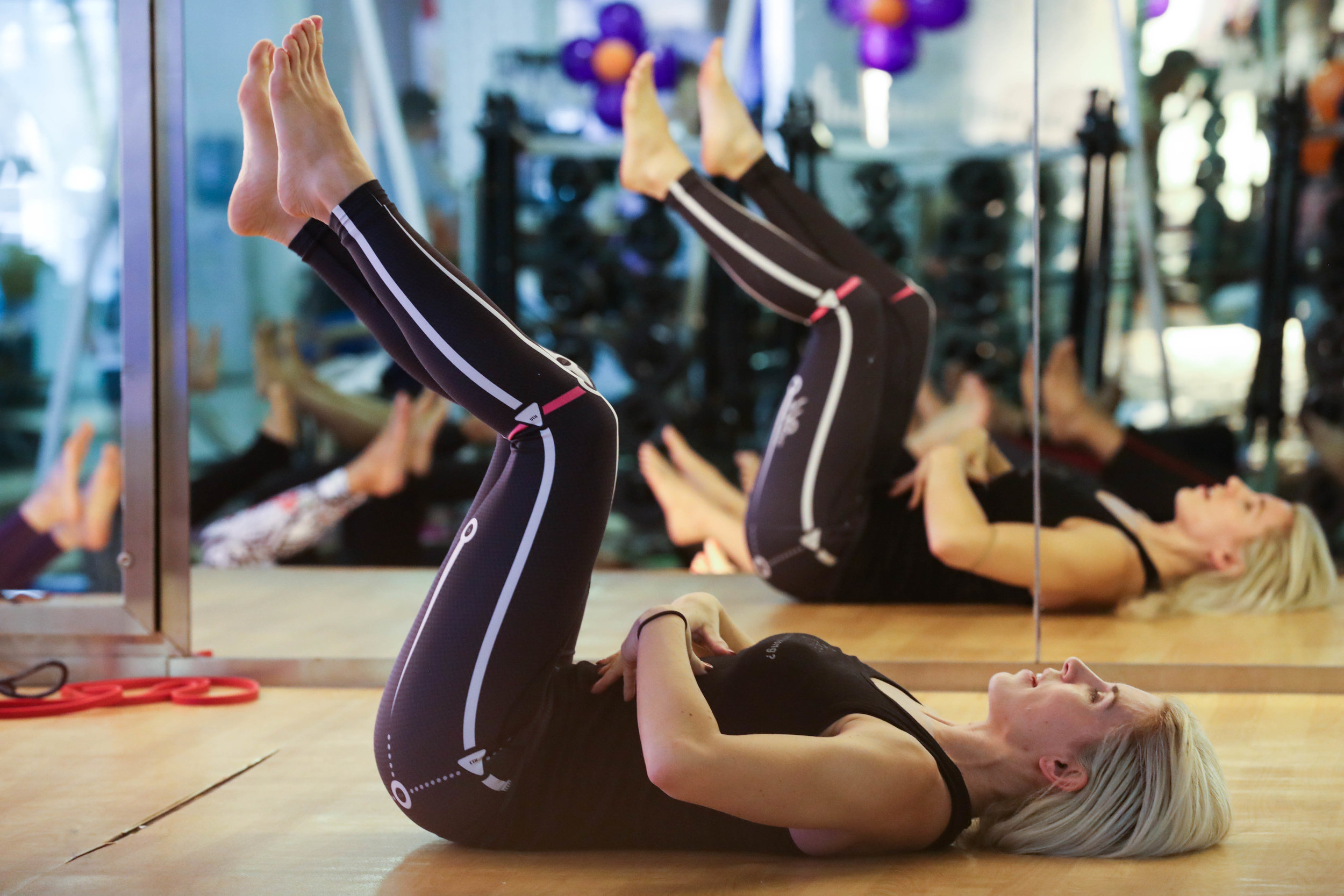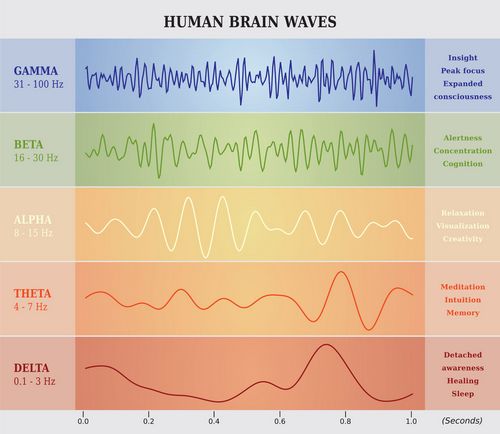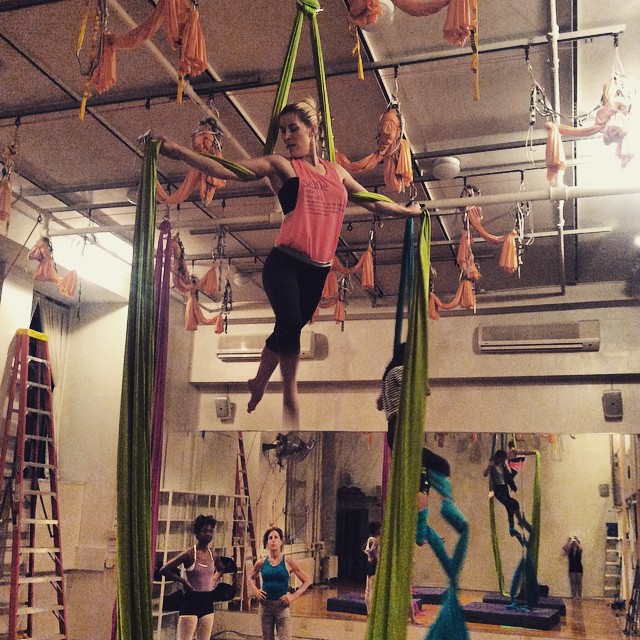
Flow Your Way to Happiness
Flow. Animal Flow? FlowFit? Vinyasa Flow?
Everyone in the fitness industry is “flowing” but is a movement flow state the same as a mental flow or a superfluidity state? Does flowing through a series of yoga poses do the same to the brain as when a base jumper jumps off a cliff or when a surfer rides a 100 foot wave?
Achieving a true flow state of mind is not simply a movement meditation.
Flow state of mind is a higher state of consciousness that is lies between the anxiety caused by a challenge being too difficult, and the boredom caused by the challenge being to easy. The mental state of flow is marked by peak creativity and a timelessness that is driven by risk, deep focus and balance between challenge & skill. And then most importantly flow is associated with a deep feeling of happiness.
“Happiness comes from within oneself” – Mihaly Csikszentmihaly
Beyond Moving Meditation
I first had a fascination with the concept of flow – or being “in the zone” – when I was a competitive gymnast in high school. I craved the indescribable clarity and timelessness that I experienced when I was about to perform a tumbling pass or execute a skill on the uneven bars.
After leaving gymnastics and entering general fitness (running, cycling, lifting weights), I had a deep emotional struggle with the greater purpose behind working out. None of it was satisfying this craving I had for deep focus or flow. Sure I would experience the classic “runner’s high” or the endorphin rush of cycling but it just wasn’t the same.
None of these movements gave me the indescribable focus of when I was a gymnast in flow staring down the runway to the vault.
In 2010, I remember sitting in the on-call room with one of my co-residents who was a jui jitsu fighter and we were talking about being “in the zone” and how we craved this deeper state of focus – almost like we were craving a drug.
Several years later a good friend of mine Dan Edwardes of Parkour Generations introduced me to the book The Rise of Superman: Decoding the Science of Ultimate Human Performance by Steven Kotler and my fascination in the topic of flow was re-ignited. I began to understand the difference between flow, superfluidity, meditation and the classic runner’s high.
Risk as a Feature of Flow
There are 17 triggers to enter a flow state however according to Kotler the three biggest triggers to flow are:
- Risk of consequence or to see a challenge in the activity
- Deep focus
- Balance between challenge : skill ratio
When there is a risk of injury or challenge this requires full immersion of the person in the activity, therefore allowing them to enter flow. This deep presence is associated with a loss of self-consciousness and a sense of timelessness.
This makes sense when it comes to my association of flow with gymnastics. It was the perfect balance between challenge, risk, skill and deep focus. But how can I carry this concept of flow to my present life as I am no longer a competitive gymnast?
We will explore this shortly.
The Brain in Flow
 As the brain enters a flow state, brain waves shift from beta to the alpha: theta border which is the only level in which gamma waves can exist.
As the brain enters a flow state, brain waves shift from beta to the alpha: theta border which is the only level in which gamma waves can exist.
Gamma brain waves bind together far reaching ideas in our brain allowing faster creative processing and strategies.
In Kotler’s book Rise of Superman he gives examples of survival strategies by those in death defying situations and how time almost slowed down allowing them to see clearer strategies for survival. Strategies they probably wouldn’t have thought of in a non-flow state.
It’s almost like in flow the brain gets out of it’s own way!
Author of The Athlete’s Way, Christopher Bergland references this “brain getting out of it’s own way” as a decrease in prefrontal cortex activity. The more subconscious we become in our movements there is an associated shift in brain waves that unlocks fluidity of thought and action.
We speak about this a lot in EBFA Education stating that excessive prefrontal activity or over-cognition actually slows our reaction time and decreases the automaticity of movement. Entering flow or understanding flow is another way to enhance the automaticity of movement in our athletes, seniors and all clients.
The Father of Flow
We mentioned that flow is often associated with risk and challenge but what are other characteristics to finding flow?
And how is flow associated with happiness? As that is the point of this blog after all!
To answer this question we need to go to the Father of Flow – Psychologist Mihaly Csikszentmihaly. Csikszentmihaly dedicated his career to studying flow, happiness and what’s referred to as positive psychology.
“The best moments in our lives are not the passive, receptive, relaxing times… The best moments usually occur if a person’s body or mind is stretched to its limits in a voluntary effort to accomplish something difficult and worthwhile.” ~ Mihaly Csikszentmihalyi
What Csikszentmihaly found is that people who frequently experienced the flow state were happier and had a higher perceived state of contentment. They were less materialistic and were driven by what’s referred to as intrinsic motivations, or simply performing an act for the simple joy of the act itself.
Intrinsic Motivation is the Secret to Happiness – and Flow!
It seems like everyone is on the eternal hunt for happiness. We know our emotional state is in a constant shift based on the perceived homeostasis of our autonomic nervous system which is fed through interoception.
As stated above by Csikszentmihaly those who find flow are happier – those who are led by intrinsic motivation are happier.
I think it’s time we look at what motivates us to do what we do?
Do you play a sport to get recognition from others? Do you take yoga or barre class because it’s trendy or you want others to acknowledge your physique? Do you work hard at our job for the incentive of a bonus?
Or….do you do what you do simply for the love of that action?
The latter is referred to intrinsic motivation. Doing something simply for the joy of the action in itself – also known as being autotelic – is linked to happiness. The reward to a chosen action is simply to fully experience that action.
Finding Flow in Movement
We already mentioned two characteristics that help you find flow – risk & intrinsic motivation. But what are other ways to begin to find flow?
How can you increase the element of challenge, focus and intrinsic motivation in your own life? Only you an answer that.
My Happiness Journey | Freedom through Flow
To further validate the theory of flow and it’s association with happiness I want to share my own personal journey to hopefully inspire others who may find themselves seeking the meaning to happiness or inspire others to find the power of movement and flow.
Back in the Summer of 2014 I was involved in a series of domestic violence altercations with my then fiance’ eventually leading to my hospitalization and his arrest. Due to the severity of the situation it triggered a massive primitive sympathetic stress response to my nervous system – putting me into a constant state of panic attacks and PTSD.
Everyday for 1 year my life was a living hell, filled with the conscious re-assessment of my bodies homeostasis to see if I was going to get thrown into another panic attack. Any shift of my body that elevated my heart rate would cause me to consciously think I was going to fall into a panic attack. After several ER visits I knew I had to do something about my emotional state and total sympathetic overdrive.
Instead of turning to psychotherapy I turned to movement therapy.
Almost 3 years ago to the date I took my first aerial silks class. I don’t remember exactly  what drew me to aerials or how I knew to seek out this art form. But what I do remember is that it has forever changed my life.
what drew me to aerials or how I knew to seek out this art form. But what I do remember is that it has forever changed my life.
The risk and challenge of climbing, dropping and “flying” 20 feet in the air forced me to be present in the moment and enter deep focus. There was a continuos balance between challenge and skill which continued to drive me further into flow.
For the first time in years I can now say that I have experienced true happiness fed directly by flow and intrinsic motivation. I now carry this concept of intrinsic motivation and the state of flow into everything I do – from writing, to presenting at a conference, to teaching my BARE class and of course to aerials silks.
To date, I longer experience anxiety, have panic attacks or PTSD. I am in full control of my emotional awareness and interoceptive perception and feel so free.
***
To learn more about how motion evokes emotion, intrinsic motivation and autotelic personalities, flow and superfluidity –
Join us on our 3-Part Webinar Series:
INTEROCEPTION | The Art of Controlling Emotion with Motion
Thursday July 13, 20, 27
***If you missed any week you get the recordings!
All are recorded and accessible indefinitely***
JOIN THIS WEBINAR NOW!
